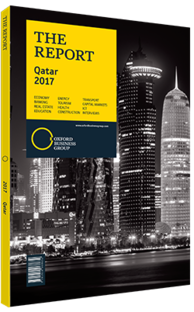Measures put into place to boost liquity in Qatar's banking sector
With Qatar in the midst of a bold capital investment programme – seeing almost $500m per week being spent on infrastructure developments – the financial sector has a vital role to play in maintaining the smooth flow of money to the domestic economy. In 2016 a liquidity squeeze resulted in a 4.6% drop in M2 money supply, while the sector’s loan-to-deposit ratio (LDR) reached 100.1%, in keeping with Qatar Central Bank (QCB) targets of 100%. However, in March 2017 the LDR had increased to 114.9%. “It is true that the LDR is now higher than we would like, but the economy is still relatively well capitalised and both the government, and banks are able to borrow on the international markets because we have retained strong credit ratings from international agencies,” Raghavan Seetharaman, CEO of Doha Bank, told OBG. “Banks have also become more selective in their loans because the cost of funding has increased by approximately 40%.”
One of the underlying causes of the 2016 decline in liquid funds was the reduction in government and government-related entity deposits in the domestic banking system. While these fluctuate naturally over time, total public sector deposits within commercial banks fell substantially to QR177.8bn ($48.8bn) in November 2016. However, as part of efforts to counteract the blockade placed against Qatar in June 2017, the public sector built up its deposits in the country’s banking system, reaching QR302.6bn ($83.1bn) in August 2017.
Maintaining Liquidity
Bringing down LDRs in an environment of scarce liquidity created a double bind for banks in 2016, leading them to compete over scarce deposits, resulting in higher interbank borrowing costs and a commensurate tightening of margins. The recovery of oil prices late in 2016 improved the situation somewhat, and even though the blockade led to international financial institutions withdrawing deposits from Qatar, the increase in domestic public deposits more than offset a 28.3% decline in non-resident deposits. The QCB claims that its steps to ease liquidity in the second half of 2016 – cutting the repo rate from 4.5% to 2.25%, and reducing the pipeline in Treasury bill (T-bill) auctions – were successful in heading off a serious crunch, and that banks continued to be able to meet credit demand from the private sector.
However, the speed with which liquidity deteriorated suggests authorities need to stay vigilant. The IMF’s Article IV from January 2017 highlighted liquidity pressures as a central challenge, stating that more transparency in T-bill auctions and improved communication in the QCB’s liquidity operations “would allow banks to better anticipate liquidity conditions in the interbank market and strengthen their liquidity management”.
Game Plan
Going forward, the authorities appear keen to encourage the commercial banking sector to reduce its reliance on public funds and primary bond markets, although these efforts appear to be delayed for the time being, given the major injection in deposits made in response to the Qatar blockade.
The secondary market for debt instruments remains relatively underdeveloped in Qatar, where a buy-and-hold mentality continues to be the dominant trend, and there is certainly room for banks to raise more of their own liquidity, through syndicated loans, for instance. Moreover, the QCB appears cognisant that the maturation of government serial bonds at different times continues to have a major influence on liquidity.
In the medium term, further steps could help avoid another slowdown. The first is to speed up the clearance of contractor invoices on key infrastructure projects. This would shift deposits from public to private accounts and reduce the private sector’s need for short-term financing. However, it is likely that major public deposits will still be necessary for the time being. The second is to channel offshore bond issues back into Qatar through the QCB, to offset further declines in public deposits. With risk-management tools and deepening non-government debt markets, the sector may be able to emerge from the liquidity squeeze stronger.
You have reached the limit of premium articles you can view for free.
Choose from the options below to purchase print or digital editions of our Reports. You can also purchase a website subscription giving you unlimited access to all of our Reports online for 12 months.
If you have already purchased this Report or have a website subscription, please login to continue.

